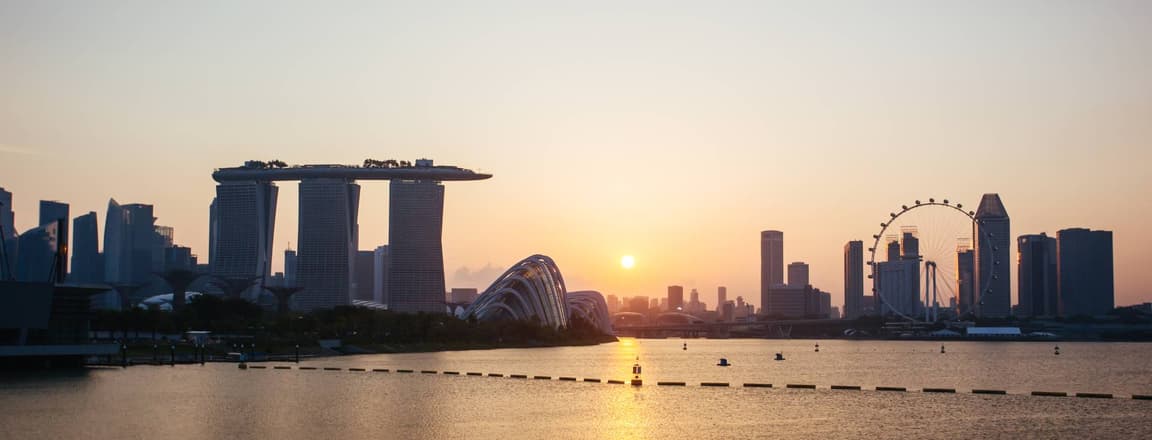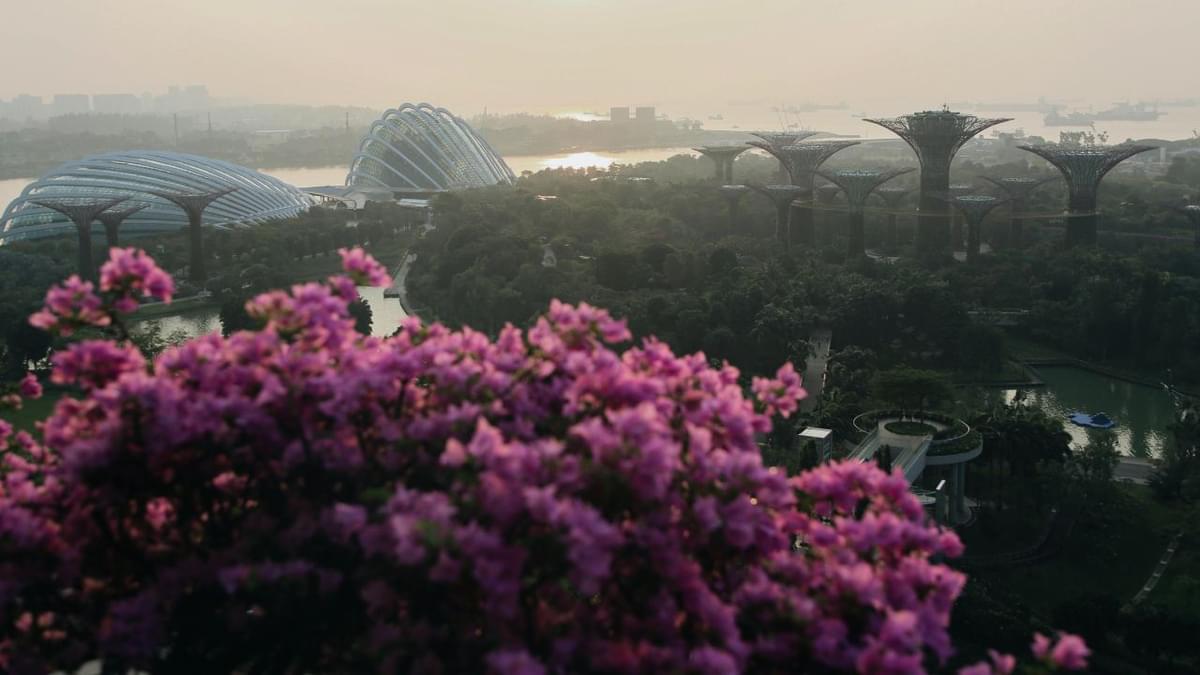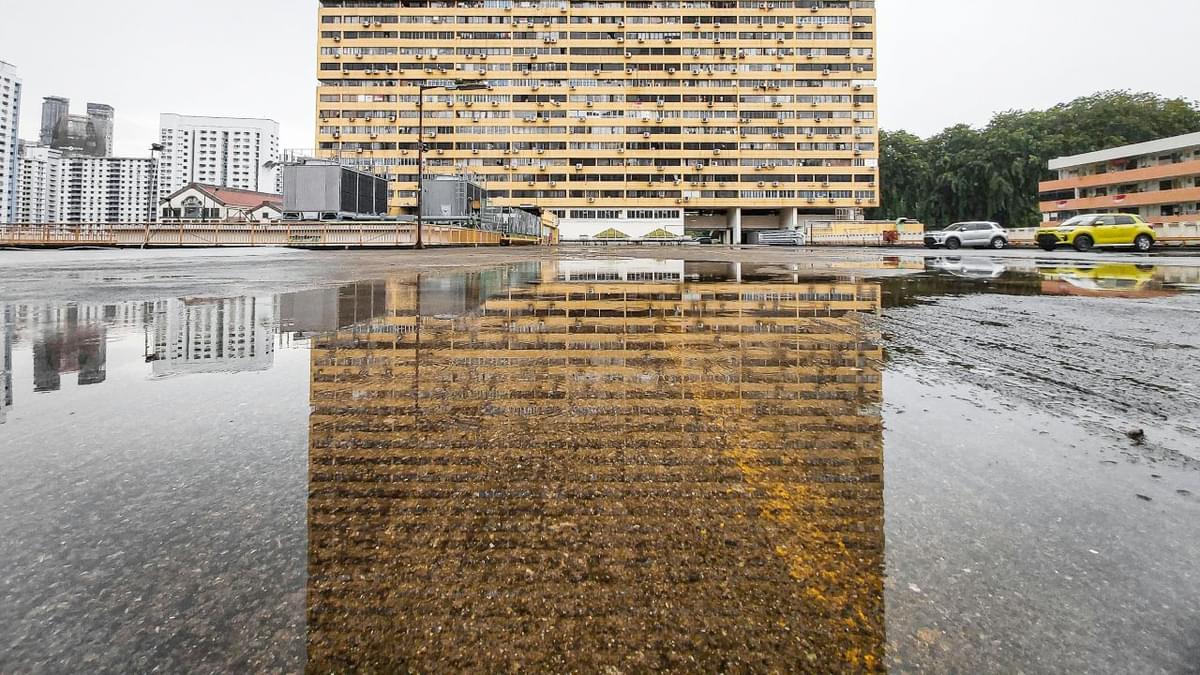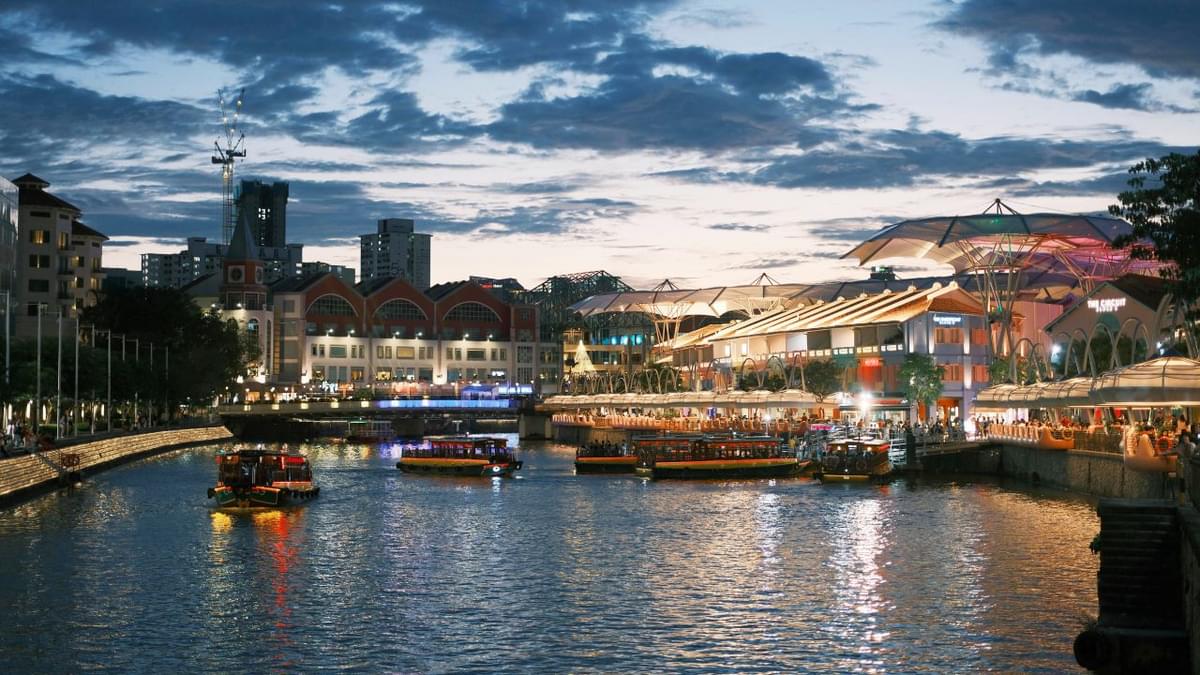
Best Time to Visit Singapore: Complete Weather & Travel Guide

Singapore has a tropical climate, which implies that it is hot and humid all year round. The city has two seasons that will influence your journey. Whether it be the ideal dry months where you can explore Gardens by the Bay or the dramatic thunderstorms that drive tourists to indoor activities, it is advisable to know the best time to visit Singapore for building your ultimate Singapore itinerary.
Key Takeaways
- February to August offers the best weather for Singapore, with minimal rainfall and comfortable temperatures
- Peak season (June-August) brings higher prices but excellent weather and maximum attraction availability
- Wet season (September-January) provides budget-friendly travel with cultural festivals despite frequent afternoon thunderstorms
- Advance booking is essential during peak season, while the wet season offers flexible planning and better deals
- Indoor attractions and covered areas make Singapore enjoyable year-round, regardless of weather conditions
- Universal Studios on Seat in coach
Singapore Climate Overview

The island nation experiences two distinct seasons rather than the common four seasons found in temperate regions.
Dry Season: The dry season is between the months of February and August. During this period, there is less humidity, no significant rainfall and plenty of sunshine. The average temperatures during the period are between 24 °C to 31°C, making it quite suitable to visit outdoor places to explore and sightsee.
Wet Season: The wet season in Singapore runs between September and January, which is characterised by increased humidity, frequent thunderstorms in the afternoons and occasional day-long rain. Although rainfall is higher, temperatures are favourable, with a minimum of 24°C and a maximum of 32°C.
| SEASONS | MONTHS | TEMPERATURE | RAINFALL | HUMIDITY LEVELS |
| Dry Season | February to August | 24-31°C | 108-170 mm per month | 70-80% |
| Wet Season | September to January | 24-32°C | 250-350 mm per month | 80-95% |
When to Visit Singapore

The ideal time to visit Singapore is during the months of February to August, when the weather is most predictable and one can enjoy outdoor activities. These months are the dry season of the city-state, which implies low rains, reduced humidity and abundant sunshine to take memorable pictures.
The dry season offers the best opportunity for outdoor attractions in Singapore. You will be able to take a leisurely stroll through the vast Gardens by the Bay, spend long hours wandering along the colourful streets of Little India and spend a whole day at the Sentosa Island without a fear of the heavy rains. However, the driest months are also the most tourist-friendly, leading to crowded parks and premium-priced rates in famous restaurants and attractions.
Singapore Weather by Month

February to April: The Sweet Spot
February is the starting month of pleasant weather conditions in Singapore. The rain declines drastically since the wet season in January, and the weather is comfortable to explore this island throughout the day.
March follows the good weather pattern and has low rainfall with warm sunny days. Humidity is also at its comfortable levels, and it is an ideal time during which one can do outdoor activities and even take walking tours across various neighbourhoods of Singapore.
April continues to stay dry, but the temperatures start to warm up. It is the final month in which you can enjoy this beautiful city-state before the peak season kicks off.
May to August: Peak Season Excellence
May to August presents the most consistent weather in Singapore, with very little rain and sunny days. This period is also the time for the largest international tourist traffic. Accommodation prices are at their peak, and landmarks such as Universal Studios Singapore are booked out weeks in advance.
August maintains the dry weather trend, and the tourist inflow also starts to cool off as the month comes to an end. This is a great balance between good weather and relatively fewer crowds.
September to November: Transitional Months
The wet season sets in September and rainfall gradually intensifies with thunderstorms in the afternoons. Tourist crowds reduce immensely, and this leads to the possibility of getting better deals.
October is more predictable in terms of rainfall, although the mornings and nights are likely to be dry.
In November, the wet season pattern is established with frequent thunderstorms in the afternoon. However, this month has cultural festivals such as Deepavali, giving colourful cultural experiences to enhance your visit.
December to January: Festive Wet Season
December has the highest rainfall recorded throughout the year. However, the magic of Christmas and New Year's celebrations make it a special travelling season.
January maintains the trend of the wet season and experiences the Chinese New Year festivities. The climate may prove worth it to someone who might wish to experience the authentic culture of this beautiful land.
Booking Strategy & Tips
Peak Season
Hotel prices tend to rise during the dry season months of June, July, and August as compared to the wet season prices. Popular tourist sites apply high pricing rates and restaurant bookings are crucial in popular restaurants. Booking early is the key to taking advantage of the peak season prices.
Wet Season Opportunities
Singapore's wet season provides the best value deal to the budget-conscious traveller. Hotel rates fall by a huge percentage as compared to the peak season months, and the cost of flights from the major international cities is also low.
Festival Period Exceptions
During Chinese New Year and Christmas, there is a slight increase in prices even during the wet season. Still, prices are usually cheaper than during the peak dry season, and the cultural experience is worth the extra cost.
What to Pack for Singapore (Seasonal Guide)
Dry Season Essentials
- Bring light and breathable clothes made of natural materials like cotton or linen.
- The use of sunscreen with high SPF is necessary.
- A pair of comfortable walking shoes is an essential part of touring around the attractions.
- A light jacket or sweater is useful in dealing with the air-conditioned indoor areas, which are mostly the shopping malls and restaurants.
Wet Season Essentials
- An umbrella is the most significant piece of equipment to have during the wet season.
- Quick-dry apparel fabrics to keep up with sudden downpours.
Getting Around Singapore by Season
Dry Season Travel
- The well-organised MRT system of Singapore is highly efficient and does not experience any delays during the dry season.
- Strolling amidst stations and attractions is more enjoyable with the reduced humidity and pleasant natural weather.
- During the dry season, taxi and ride-sharing are normally consistent, but during peak tourist months, rides can become a bit more expensive in view of more demand.
Wet Season Considerations
- The MRT system also works effectively even during the wet season, with occasional heavy rains causing temporary overcrowding.
- In case of heavy rain, there can be a short supply of taxis due to high demand.
- Ride-sharing apps can be used to book transportation in advance to help one find transport during storm seasons.
Best Time to Visit Singapore: Final Thoughts
Singapore offers thrilling attractions, mouthwatering food, heart-stopping places, great heritage sites and good weather all year long. The best time to visit Singapore ultimately depends on your priorities and travel style. Regardless of when you visit, our PickYourTrail’s experts will curate your Singapore Tour Package that will suit any budget.
FAQS
What is the rainiest month in Singapore?
December typically receives the most rainfall, with frequent afternoon thunderstorms and occasional all-day rain. However, Singapore's advanced drainage systems and covered walkways help minimise the impact on tourist activities.
How many days should I spend in Singapore?
Most visitors find 4-5 days sufficient to cover Singapore's major attractions comfortably. This allows time for both indoor and outdoor activities while accounting for potential weather delays during the wet season.
Is Singapore too hot to visit in summer?
Summer temperatures in Singapore range from 26-32°C, which remains manageable with proper clothing, hydration, and frequent breaks in air-conditioned spaces. The dry conditions actually make summer heat more tolerable than wet season humidity.
Should I avoid Singapore during the monsoon season?
The monsoon season (September-January) shouldn't be avoided entirely, as it offers budget-friendly travel and cultural festivals. However, pack appropriately and maintain flexible itineraries to accommodate afternoon thunderstorms.
When should I book Singapore hotels for the best prices?
Book 2-3 months in advance for dry season travel to secure reasonable rates. For wet season visits, booking 4-6 weeks ahead typically provides the best balance of selection and pricing, except during festival periods, which require earlier booking.
Update your location?






